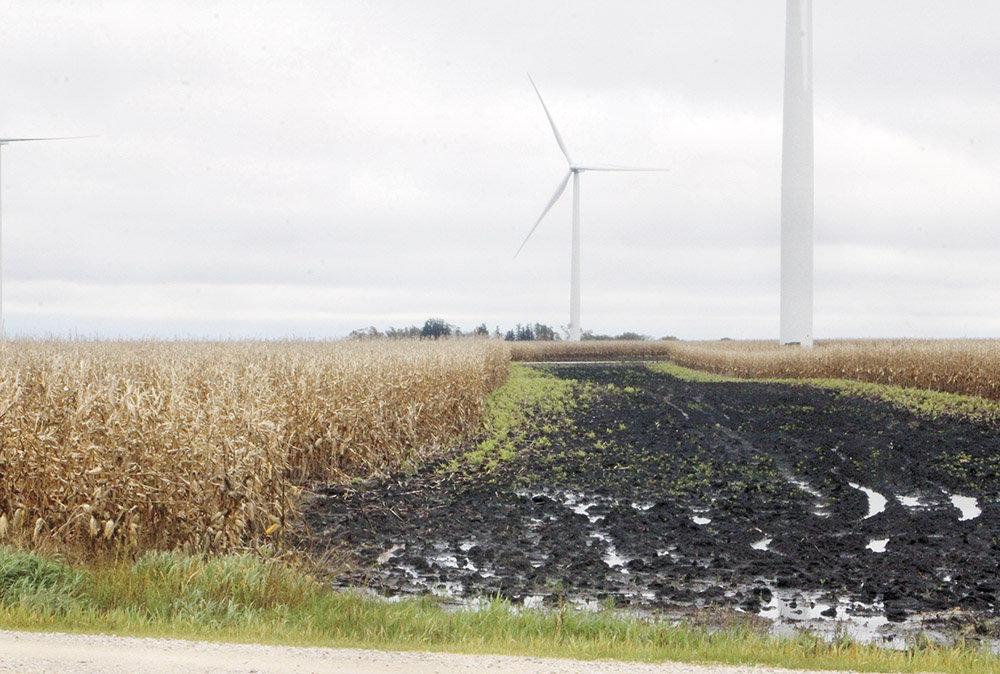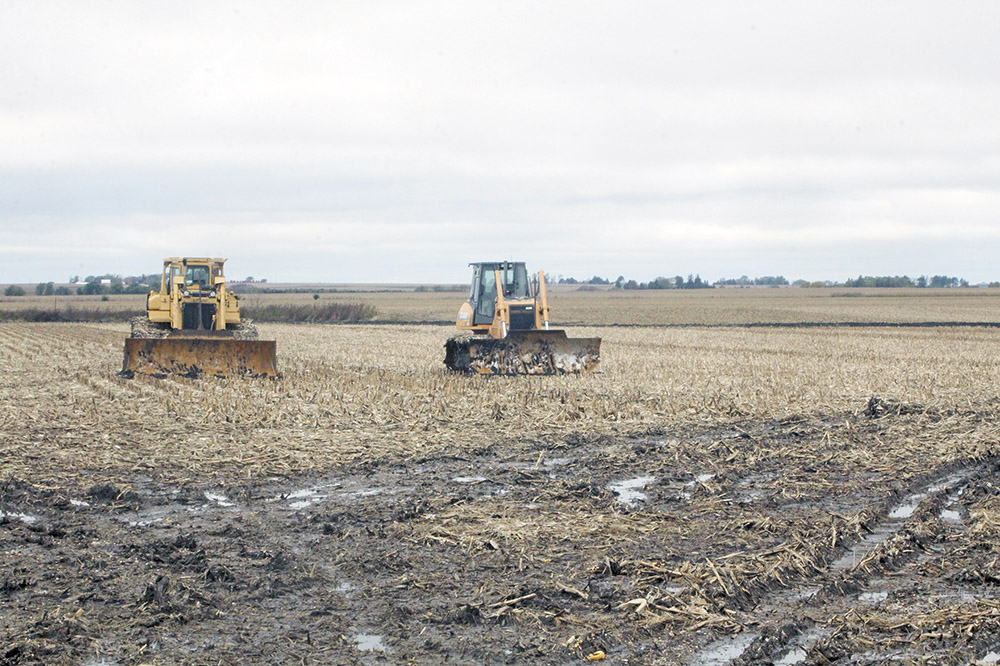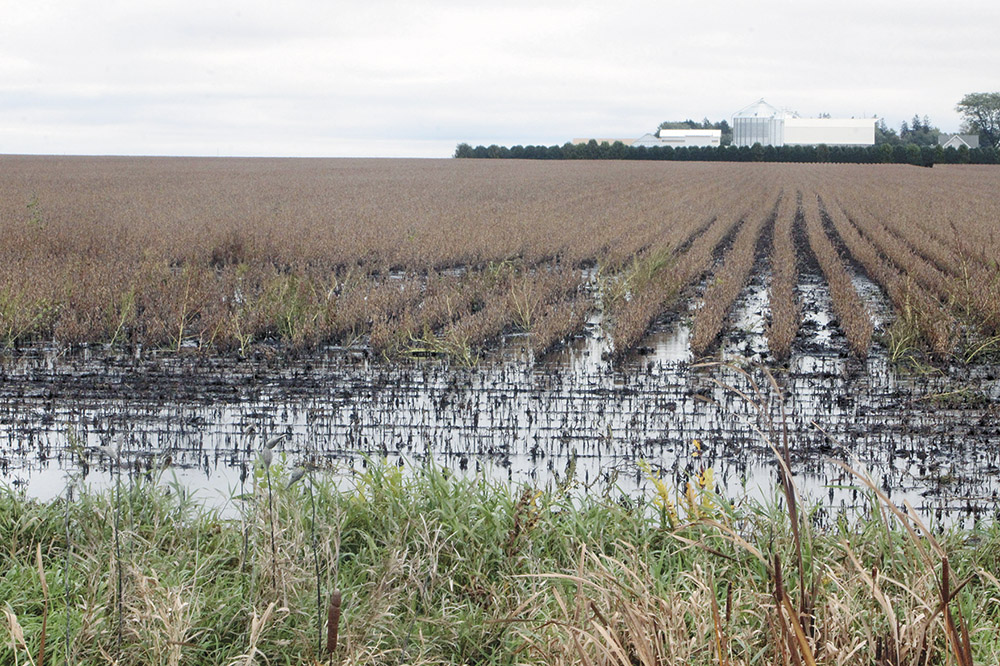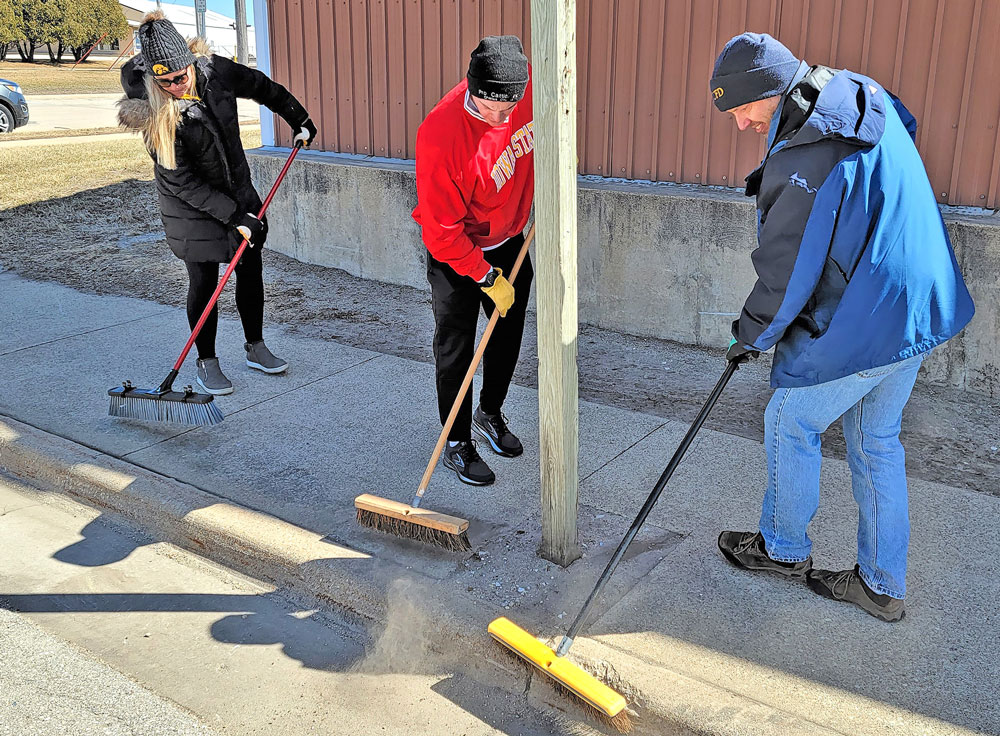With fields waterlogged, farmers face continued challenges
By James Grob, jgrob@charlescitypress.com
Terry Basol said crop farmers in Iowa are “all in the same boat” — almost literally.
“The last three or four weeks have been a struggle,” said Basol, field agronomist and crop specialist for Iowa State University Extension and Outreach, who works out of Nashua. “We haven’t gotten a lot of corn or soybeans out in this neck of the woods.”
With the tremendous amount of rain over the last few weeks, the biggest problem facing farmers is the fact that they can’t get into their fields.
“Our soils are saturated, there’s nowhere for the water to go,” Basol said. “This has been a year of absolute challenge for farmers. I really feel for them. They had a late start in the spring, and they’ve been pushed to the max throughout the growing season. They’ve been literally dodging raindrops all season long.”
According to Basol, right now northeast Iowa has about 8 percent of corn and 10 percent of soybeans harvested. Basol said that soybeans aren’t in as precarious a position as corn.
“The soybeans aren’t as much of a problem,” he said. “The only concern would be a hard frost if they can’t get at them in time.”
According to the Iowa Crop Progress and Condition report released by the USDA National Agricultural Statistical Service, nearly all the Iowa soybean crop was coloring with 94 percent dropping leaves, eight days ahead of average.
Looking at Iowa’s soybean crop as of Oct. 7, 18 percent of the crop has been harvested, five days behind average. Soybean condition is rated 70 percent good-to-excellent.
Iowa Secretary of Agriculture Mike Naig commented earlier this week on the report, which is released weekly from April through November.
“This run of extremely wet weather has slowed harvest progress dramatically and as a result soybean harvest is now well behind the five-year average. We need the rains to stop and several days of dry weather so fields can dry and farmers are able to get back to harvest,” Naig said.
According to the report, continued wet weather conditions allowed Iowa farmers just 1.6 days suitable for fieldwork during the week ending Oct. 7. Topsoil moisture on average statewide rated zero percent very short, zero percent short, 41 percent adequate and 59 percent surplus. Subsoil moisture rated 1 percent very short, 2 percent short, 50 percent adequate and 47 percent surplus.
The harvest news isn’t all dire, however, at least not yet. As of Oct. 7, the survey showed 95 percent of the 2018 Iowa corn crop was mature, nine days ahead of average. Fifteen percent of the state’s corn for grain has been harvested, 10 days ahead of last year.
“I have heard that yields are looking pretty decent for both corn and soybeans,” Basol said. “Hopefully, the forecasters are correct. They have said that it’s going to be dry for the next few days here.”
National Weather Service forecasts for the area call for dry weather Thursday through Sunday, with a slight chance of showers Saturday night.
“The temperatures aren’t going to be real warm, but if we can get some good dry weather to help everything out, so they can it least get a start, it would be good,” Basol said. He added that most of the concerns now are in regard to corn grain quality and stock quality.
“With the conditions we’ve had, I’m concerned about stock integrity.”
Basol said that once it does dry up enough for farmers to get into their fields, he encourages them to do a good stock quality assessment. He recommended either a “pinch test” or a “push test.”
“Pick five spots that are representative of your fields, and pick 20 stocks to test per spot,” he said.
He said that with a pinch test, you pinch the lower part of the stock, and if it crushes really easily, then that means the integrity of the stock has been compromised. With the push test, you push the tops of the plants back about 30 degrees, and if the plant crimps and isn’t able to snap back to a vertical position, count that plant as compromised.
“If more than 10 percent of the plants show those symptoms, you make that one of the very first fields to harvest,” Basol said. “Try to get out there and get it before it’s too late.”
Basol said that as farmers are checking for stock integrity, they can also check grain quality.
“We’re most concerned about ear mold,” he said. “Take a look at each ear on the stock and look for mold on the plant.”
Fields should be scouted for molds because some species have the potential to produce mycotoxins. Mycotoxins are natural chemicals that are produced by certain types of ear rot fungi. These toxins are nonliving compounds and can have detrimental effects to both humans and animals if they are present in food or feed.
“If more than 10 percent have ear rot, get to those first, dry it and cool it as soon as possible,” Basol said. “If they’re looking at feeding that grain to livestock, make sure they get it tested — their veterinarian can send it to ISU diagnostic lab — and make changes to their feeding plan if they find anything they can be concerned about.”
As always, Basol stressed safety first at harvest time.
“That’s especially important now,” he said. “The guys are more in a hurry because of the situation. They should always think twice and don’t do anything to jeopardize their safety.”
Basol said that standard also applies to others on the road.
“Be safe and aware of farmers on the road, and watch for equipment on the road, watch for flashing lights at night,” he said.











Social Share